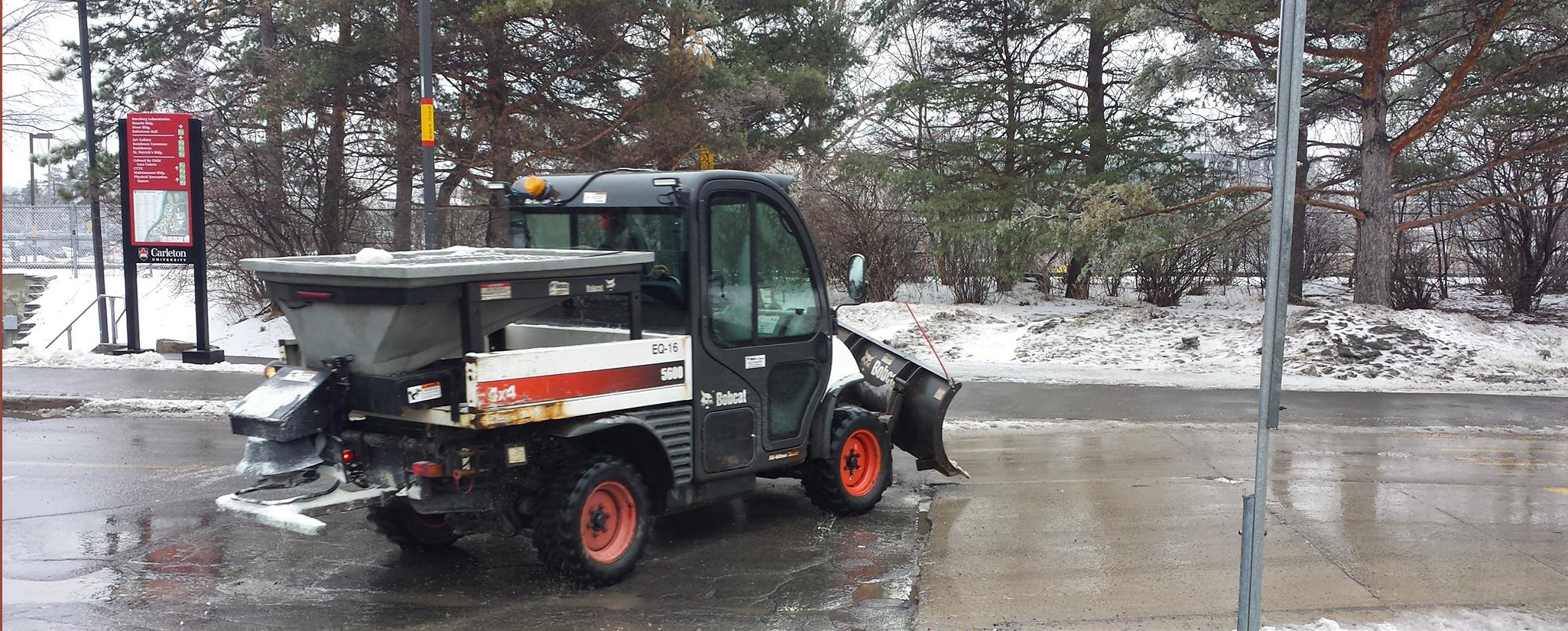In Canada, fixing up university campuses is a necessity if they expect to operate during the winter.
That was made evident on a cold Jan. 8 day, when a water main broke, flooding Southam Hall at Carleton University and cancelling classes in that building for the day.
While preparations include the typical salting of pavement, rubber mats for wet shoes, and cranking up the thermostat inside campus buildings, winter-proofing Canadian university campuses requires a substantial amount of planning.
“If we can’t heat the campus, we have to send everybody home. It’s serious,” said Pierre De Gagné, the director of utilities and campuses sustainability at the University of Ottawa (U of O).
“The first line of defence for reliable heating in Ottawa is to design it so that if something breaks, something else is available,” he said. “The next thing you do is get your equipment ready, tested, and checked out before it gets cold.”
Preparations for winter begin in the summer, according to De Gagné.
“There is an ongoing preventative maintenance program that happens every day, but we begin preparing our boilers for the winter during the summer,” he said.
Darryl Boyce, the assistant vice-president of facilities management and planning at Carleton, said precautionary measures such as protecting pipes and providing proper winter equipment to its staff members need to be taken.
“We have to keep the pipes at about 17 degrees [Celsius] in order to keep them from freezing when it gets really cold,” he said.
There’s also the obvious task of removing the significant amount of snow that falls in Ottawa during winter. Boyce said snow is removed right when it falls.
“All of the large equipment we mobilize on the roads and parking lots are contracted out to companies with large equipment,” Boyce said. “We have snow dumps, but we’ll pile it up in vacant lots as often as we can. Sometimes if it snows too much, we have to remove the snow from the campus entirely.”
According to Boyce, Carleton maintenance staff are provided with proper winter attire as well. The winter-proof clothing consists of helmets, proper gloves, jackets, and snow pants.
Equipment such as small tractors and snowblowers to shovel sidewalks for example, are tools at their disposal.
While the exact amount spent on winter-proofing campuses varies each year, Boyce said the removal of the snow itself doesn’t take up a large part of the budget.
“It takes a lot more money to keep the buildings clean, maintained, to buy utilities, to light and power the buildings,” he said. “Snow removal is not large when compared to those expenditures.”
De Gagné admits while readying U of O’s campus can be a big job, but like Carleton, it doesn’t make a huge dent on its operating budget.
“The maintenance for these things is pretty simple stuff. You can get all of it done under $10,000 because it is categorized as staff time,” he explained. “Unless there are repairs required, where we would have to hire a specialized contractor to fix things, the actual inspections themselves are internal labour and a routine part of what we do.”
“We’ve had buildings freeze and plumbing freeze, but that’s just because students leave windows open,” De Gagné said. “I’ve been here for 25 years and we’ve never had a minute or an hour where we couldn’t heat the campus.”






